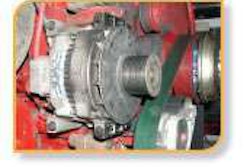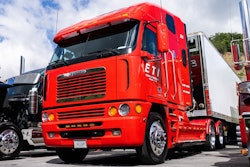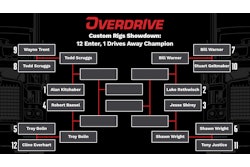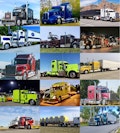Certain niches offer big income potential for those willing to specialize.
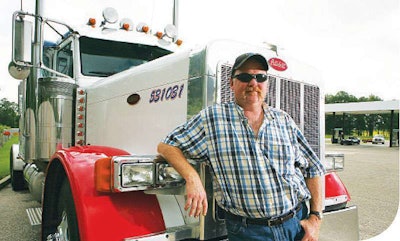 Tim Philmon’s 2011 income boost arrived after what he calls the “survival mode” he and so many flatbed operators went through in 2009. His success strategy includes longer rounds and flocking to areas with jobs no one wants to do, such as the North in winter.
Tim Philmon’s 2011 income boost arrived after what he calls the “survival mode” he and so many flatbed operators went through in 2009. His success strategy includes longer rounds and flocking to areas with jobs no one wants to do, such as the North in winter.In today’s high-dollar-freight landscape, some old adages hold true: Enclosed car haulers by and large still make top dollar, though auto manufacturers have seen better times. Hazmat niches like liquid bulk tank operations and other specialized haulers continue to command high rates.
New contenders are emerging, too. For example, carriers are sweetening the pot to attract owner-operators to keep up with demand in intermodal. It’s an area where flat pay rates for miles loaded and empty is boosting attractiveness to owner-operators as average length of haul declines and fuel prices rise, says Transcore Industry Pricing Analyst Mark Montague.
Basic flatbed has recovered after the construction industry’s sharp decline during the recession, too, he adds. “No matter if you’re a big fleet or an owner-operator, you’re seeing 10 to 11 percent more money” in flatbed. “There’s an ongoing shortage of equipment, and shippers are willing to pay.”
These and other niches offer big earning potential if you pay attention to the details beyond merely gross pay rates.
Energy
The evolving energy landscape has opened new opportunities with high-income potential for owner-operators. One relates to hydraulic fracturing for natural gas. Another supports construction of electricity-generating wind turbine farms.
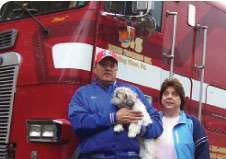 Steve and Doris Bixler, leased to Reed Trucking, haul sand for hydraulic fracturing to natural gas wells with this 1989 Freightliner cabover and copmany owned pneumatic tank.
Steve and Doris Bixler, leased to Reed Trucking, haul sand for hydraulic fracturing to natural gas wells with this 1989 Freightliner cabover and copmany owned pneumatic tank.Owner-operator Steve Bixler, after a long career in over-the-road work, last year fit his 1989 Freightliner cabover into hauling sand in a pneumatic tank to hydraulic fracturing sites in Eastern Pennsylvania, where he lives. “We load it at rail yards,” Bixler says, in addition to “one spot in Buffalo where it comes off of a barge.” Running often off-road to get to the sites, Bixler and his wife, Doris, average only 900-1,200 miles a week, but their average revenue on those miles exceeds $5,000, or around $5 a mile. “For the first time in 12 years as an owner-operator, I’m really making money,” he adds.
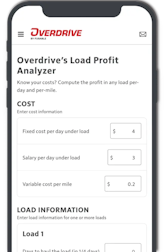
Leased to Schuylkill Haven, Pa.-based Reed Trucking, which in turn is contracted with Updegraff Trucking of Williamsport, Bixler’s D&S Bixler Trucking is an S Corp business. He pays himself a 
The operation required investments, Bixler says, including auxiliary equipment such as an air compressor for offloading the tank. “About $7,600 and change for that,” Bixler says, which included the Tuthill blower and the power takeoff on the transmission that drives it.
Another top-dollar opportunity exists in hauling wind energy components to new wind turbine sites. Palmerton, Pa.-based owner-operator Bill Ehret, leased to Daily Express, pulls a Schnabel-type trailer to haul windmill towers.
Ehret operates a 2006 Freightliner Coronado spec’d for heavy haul with a 625-hp Caterpillar, double frame rails and a lift axle to pull the trailer. His wife, Kathy, operates the pilot car. “We’re close to 160 feet long,” he says.
 Ohio owner-operator James Butler (left) has hit the jackpot with intermodal container moves. He’s leased to J.B. Hunt.
Ohio owner-operator James Butler (left) has hit the jackpot with intermodal container moves. He’s leased to J.B. Hunt.
Among other wind-energy haulers at Daily, says Recruiting Manager Erik Thompson, are blade runners and those like owner-operator Jack Berghorst who haul the generator module of the turbine on open-deck heavy-haul trailers.
Intermodal
Year 2010 was big for international and domestic container movement in the United States, and the trend continues. Third-quarter statistics from the Intermodal Association of North America showed domestic container movement up 9 percent from the second quarter, and at levels not seen since 2006.
Intermodal could take up an even larger share of the truck-freight market, representing a shift in opportunities for owner-operators. “As fuel has risen in price … it makes rail intermodal that much more attractive,” says Transcore’s Mark Montague. “Shippers ship more of the long-haul traffic to train, and the long-haul trucker gets hit in the pocket,” he says.
However, intermodal offers advantages compared with general freight, says Sarthak Verma, director of J.B. Hunt’s growing pool of intermodal owner-operators. “The intermodal drayage world is very conducive to someone who wants to earn,” he says.
A couple reasons for that:
Much less waiting. Verma says pay rates are similar to those in general van freight. James Butler, leased to J.B. Hunt, grosses an average $1.40 a mile, counting fuel surcharges. He gets the miles he wants because of less time spent waiting at docks.
“One of the legs of the move has to go into the rail yard,” says Verma, and it’s usually drop and hook.
Butler’s among Hunt’s regional operators, moving five container loads a week between Chicago and his native Ohio. Typically, he leaves his home in Sidney on Monday morning and is home Friday afternoon.
Deadhead miles are well-paid. Butler gets paid the same rate to his 2004 Volvo tractor, with fuel surcharge, on loaded and empty miles. He signed on with J.B. Hunt intermodal last February. In November, with an average 2,200 to 2,500 miles a week, his take-home income was averaging $1,500 to $1,800, or between $78,000 and $96,000 yearly business income, much better than he’d ever done with OTR and local delivery.
Bradley Coddington, with a 2000 Kenworth T800, found favorable mileage-pay rates for any load longer than 20 miles in the operation of Milwaukee, Wis.-based J.R. Long Transport.
Other intermodal carriers Coddington had hauled for paid by the load, with no accounting for detention time. With Long, his detention pay clocks in at $8 every 15 fifteen minutes after the first two hours spent waiting.
Long pays miles both empty and loaded at the same rate and covers his iPass tolls, which can get high in and around Chicago, where he runs.
Deck specialized
The various niches within specialized open deck hauling, such as removable goosenecks, step decks or load-height-limiting flatbeds, can offer high-revenue opportunities.
R.C. Barnes, pulling a step deck with his 1998 Kenworth T2000 for G&W Hauling and Rigging of Cleveland, says there’s plenty of large equipment needing moves. He recently hauled crane beams for two crane manufacturers in Ohio on stretch flatbeds. The hauls paid $2,500 for 516 miles between Cleveland and a Siemens installation in Charlotte, N.C.
“Most of those crane beams are less than 10,000 pounds,” Barnes says, though every crane usually takes three loads. Though he often also hauls with a step deck, using a stretch flatbed for long over-dimensional loads means getting back-loaded with decent-paying freight from load boards used by G&W, reducing deadhead miles.
Owner-operator Steven Abell, leased to Greentree Transportation, sticks to high-rate freight, grossing $198,000 on just 88,000 miles loaded and empty in 2010, or $2.25 a mile. This year he expects to exceed that revenue rate.
He pulls a 2004 XL Specialized three-axle double-drop step deck with a 1997 Freightliner Classic.
“I don’t haul regular step deck freight,” he says. “If it isn’t oversize, I don’t do it – no pipe, no pallets. I try to stay with one piece, up to 74,000 pounds, and take it where it needs to go. The rates just aren’t good enough for regular step deck freight. I don’t know how owner-operators can run their tires off with $4 fuel and stay above water.”
Florida-based owner-operator Tim Philmon, leased to Landstar, takes a similar tack but does it with a Transcraft 48-ft. flatbed. Philmon’s numbers reflect the larger flatbed income trend over the last two years, including a particularly sharp spike in demand for the first three quarters in 2011. He expected 2011 to be “a banner year” with upward of $60,000 net profit, a sizable boost from previous years.
Philmon’s not putting his 2005 Peterbilt 379 in line at steel mills and lumber yards to do it, though. “I try to keep in the specialized area,” he says. “You’re not having to sit in line on both ends.”
Given a lack of truck capacity in flatbed, Philmon says, increased demand means an owner-operator raise as long as you’re paid by percent of revenue. He tracks demand by searching the Landstar load board for the number of loads paying more than $2.50 a mile. “From about March to mid-August, mid-July, [in 2011] on any given day there were well over 400-500 [flatbed] loads over $3 a mile. Today, there might be 50. I think the demand is slowing up – this climate changes so fast because of the lack of trucks out here.”
Reacting quickly to take advantage of those good times, in any niche, is the secret to high income, Philmon says. “That’s why I stay out so long sometimes.”
Freight and rates strong for tanks
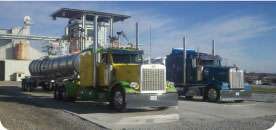 Bill Cyphers, owner and part operator of Kansas-based Dale Barnes Trucking fleet, says a steady uptick in freight and rates for his tank-hauling business has made big investments possible, such as two brand-new tank trailers (about $80,000 per) last year. As his son Zachary gets into the business with the 2003 Peterbilt 379 pictured (the Kenworth is Bill’s), the firm seeks more opportunites.
Bill Cyphers, owner and part operator of Kansas-based Dale Barnes Trucking fleet, says a steady uptick in freight and rates for his tank-hauling business has made big investments possible, such as two brand-new tank trailers (about $80,000 per) last year. As his son Zachary gets into the business with the 2003 Peterbilt 379 pictured (the Kenworth is Bill’s), the firm seeks more opportunites.There is a 6-cents-a-mile pay premium for leased tank owner-operators over flatbed, reefer and van contractors, says Gordon Klemp of the National Transportation Institute. That’s due in part to higher deadhead miles in the segment, where most leased owner-operators are paid on percentage.
On the independent side, though owner-operators are rare, the niche remains lucrative. For certain commodities, too, it’s a stable business. Independent tank owner-operator Bill Cyphers, with six-truck fleet Dale Barnes Trucking, notes per-truck revenues of $200,000 yearly hauling liquid fertilizer, anhydrous ammonia and occasionally propane with tank trailers the company owns. Cyphers says freight availability and rates have risen over the last five years.
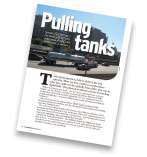 Visit overdriveonline.com and search for “pulling tanks” for the tanks story, with more on leased owner-operator rates.
Visit overdriveonline.com and search for “pulling tanks” for the tanks story, with more on leased owner-operator rates.Cyphers, who continues to haul for his and his business partner’s company in a 2004 Kenworth W900 as his sons join him in the business, was hoping to further expand that versatility at the end of 2011 by adding two new tankers to the eight they already own. The new tankers would increase their capacity to haul hazardous acids and other commodities.
Rate analysis tools for independents
Transcore publishes data for independents seeking ways to maximize revenue with a mix of spot and contract freight. Rate data is based on the Transcore DAT load board and reports from carrier partners and is published weekly at Transcore’s Trendlines site (at transcorefreightsolutions.com, click “Trendlines” under the resouces menu).
Transcore’s “Best Lanes in America” quarterly report, comparing spot and contract rates, spotlights areas of the country where demand for trucks by equipment type (van, flat and reefer) is highest. And the “DAT Trihaul Report” often highlights the “Worst Lane in America” with ideas for breaking it up into shorter segments to make it more profitable.
“We look for some of the worst backhaul lanes,” says Mark Montague, giving readers indications of destinations to either avoid, seek out or consider alternate “trihaul” strategies for maximizing revenue.
Check out the current “Best Lanes” comparison report via the site’s main page, and find the DAT Trihaul Report under the resources menu. There you can also download a primer on the “ABCs of Trihaul Routing.”
Flatbed is back
After dipping below refrigerated for several quarters through the first three months of 2009, income 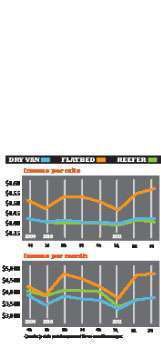
Flatbed hauler Tim Philmon experienced the same spike that happened nationwide in 2011. “I’m having a banner year all across the board,” he said late last year. Here are his 2010 and estimated 2011 revenues:
2010: $165,000, $1.50 / mile
2011: $200,000, $1.75 / mile
How $12,580 became $1,800
Owner-operator Steven Abell, leased to Greentree Transportation, hauled a “rock bucket” on his double-drop three-axle step deck primarily for the learning experience, he says in retrospect. The $12,580 it promised to pay to the truck was a good incentive, but he knew it wouldn’t be easy.


 For video of Steven Abell’s haul of a mammoth mining bucket to Alberta, visit youtube.com/mrstevenabell.
For video of Steven Abell’s haul of a mammoth mining bucket to Alberta, visit youtube.com/mrstevenabell.“Pilot cars really ate me up” in terms of costs, he says. “I had to have three in Montana and Wyoming and two in Canada.” At least one of them made $3,100 on the haul, well more than the $1,800 he eventually took home himself.
$12,580 gross to the truck
– $9,500 pilot cars
– $900 fuel
– $380 permits, other expenses
= $1,800 net to the truck





